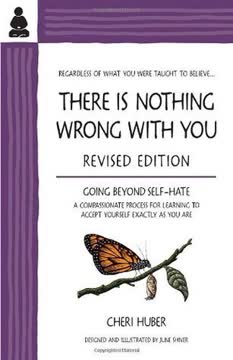Key Takeaways
1. Self-Hate is Learned, Not Innate
Unless you were raised by wolves, the chances are extremely good that as you were growing up, you heard at least a few of the following: Don’t do that...Stop that...Put that down...
Childhood conditioning. Self-hate is not something we are born with; it is a learned behavior deeply ingrained through childhood socialization. Constant criticism, judgment, and disapproval from parents, teachers, and society teach us to believe there is something fundamentally wrong with us. We internalize these messages, concluding that our inherent nature must be flawed if people treat us this way.
Survival mechanism. As children, our survival depends on the approval of caregivers. When our needs are rejected or met with negativity, we learn to suppress those needs and identify with the authority figure's judgment. This leads to the belief that "there must be something wrong with me," which becomes the birth of self-hate, a defense mechanism to ensure survival by trying to be "good" or "perfect."
Societal norm. Society often labels self-love and self-acceptance as "self-centered," reinforcing the idea that we must constantly look for flaws and punish ourselves to be good people. This pervasive conditioning creates a foundation where self-hate feels normal and necessary, preventing us from appreciating ourselves for who we are and trusting our own hearts for guidance.
2. Self-Hate is an Autonomous Process
In other words, I am not hating myself; self-hate is hating me.
A separate entity. Self-hate is not a part of your core being but rather an autonomous process, like an endless tape loop of conditioning. It has a life of its own, constantly creating and shaping your perception of the world and yourself. It's a "how" (the process of hating) rather than a "what" (the specific things you hate about yourself).
Self-maintenance. This process exists solely to perpetuate itself. As long as self-hate is active, it will find something to hate, whether it's your body, personality, actions, or even your attempts to improve. It sets impossible standards, ensuring you can never meet them, thereby justifying its continued existence and control over your life.
Beyond personal fault. Understanding self-hate as a process helps depersonalize it. It's not you who is inherently hateful; it's the conditioned process of self-hate operating through you. Recognizing this distinction is the first step toward disengaging from its grip and seeing that its purpose is not to help you but to maintain its own power.
3. Listen to the Voices, But Don't Believe Them
Just don’t believe them!
Internal dialogue. Self-hate manifests as a nearly endless stream of internal "voices" – thoughts, judgments, criticisms, and opinions we tell ourselves daily. These voices can sound overtly cruel, like "You're disgusting," or deceptively helpful, like "It was stupid of me to say that, I must watch what I say."
Egocentricity's tool. These voices are the primary tool of egocentricity (the illusion of a separate self) to maintain control. They will say and do anything to keep you focused on what's "wrong," pulling you out of the present moment and into a world of past regrets or future anxieties. Their sole interest is survival at any cost.
Disengaging from belief. The key is to become aware of these voices without believing they hold any truth about you. Practice hearing them as just noise, like people talking at a dinner table – you can listen, but you don't have to engage or decide who is right. Any voice, internal or external, that tells you something is wrong with you is not the voice of your true nature or heart.
4. The Scam of Trying to Be Perfect
It’s like being on a journey and being completely lost, going in the wrong direction but making really good time.
The perfection trap. Self-hate convinces us that if we try hard enough to be perfect, we will finally be lovable and accepted. This leads to constant effort spent trying to be good, earn approval, and please others. However, self-hate sets the standard for perfection, a standard that is constantly shifting and impossible to meet.
Trying harder fails. When our efforts to be perfect inevitably fail to bring the desired love and approval, the conditioned response is to simply "try harder." This is the core of the scam: investing more energy in a strategy that is fundamentally flawed and designed to fail. It keeps us trapped in confusion and a cycle of self-blame.
Faulty premise. The underlying faulty premise is that meeting external standards will make you lovable. The truth is, you are already lovable. The effort to become lovable through perfection is a distraction from realizing your inherent worth. Recognizing this scam is crucial for shifting from trying to fix yourself to simply accepting yourself.
5. Self-Hate is the Ultimate Addiction
Self-hate is the ultimate addiction.
Coping mechanism. Self-hate functions like an addiction because its coping behaviors make you feel better and worse simultaneously. Engaging in self-criticism or punishment can provide a temporary sense of control or justification, but ultimately reinforces the underlying belief that you are flawed and unworthy, leading to more suffering.
Reinforcing identity. Self-hate maintains identity through a constant balancing act of punishment and indulgence. You might be hard on yourself in certain areas (e.g., work compulsively) to justify indulging in others (e.g., overeat). This cycle reinforces the self-hating identity and prevents you from experiencing genuine well-being.
Breaking the cycle. Like any addiction, confronting self-hate requires willingness and courage. You have to face the "Bad Guy" – the fear and terror that arise when you stop believing the hateful voices and start being kind to yourself. Self-hate is terrified you will make kindness a habit because that would dismantle its power structure.
6. Suffering Provides Identity
Suffering provides our identity.
Ego's survival. The illusion of a separate self (egocentricity) is maintained through struggle and dissatisfaction. Ego needs something to be wrong so it can continue its fight for survival, constantly looking for flaws and creating crises to overcome. This constant state of trying to fix what's wrong becomes the foundation of our perceived identity.
Investment in misery. We often have an unconscious "investment in misery" because it keeps us at the center of our universe. By focusing on our suffering and perceived injustices ("It's not fair," "I'm a victim"), we reinforce our sense of self and justify our behaviors, even harmful ones. This prevents us from seeing the reality of shared human experience.
Letting go of struggle. When we stop struggling against what is, the identity built on suffering begins to dissolve. This can be terrifying to the ego, as it feels like a loss of self. However, letting go of the struggle is the path to freedom, revealing the spaciousness and peace that exist beyond the ego's need for constant validation through suffering.
7. Spiritual Practice Begins When Self-Abuse Stops
Spiritual Practice Doesn’t Begin Until the Beatings Stop.
Ending self-violence. True spiritual growth cannot occur while you are actively engaged in self-hate and self-abuse. Many spiritual teachings emphasize love, forgiveness, and compassion, not self-punishment. Continuing to beat yourself up contradicts the fundamental principles of most spiritual paths.
Risking goodness. To find freedom, you must be willing to risk stopping the self-beatings long enough to discover your inherent goodness. Self-hate tells you that without its control, you will be terrible, but this is a lie designed to keep you trapped. It takes immense courage to challenge this deeply ingrained belief.
Sitting with what is. Practices like meditation teach you to sit still with whatever arises – thoughts, feelings, sensations – without reacting or judging. By observing the patterns of self-hate and fear without engaging, you prove to yourself that you won't die or fall apart. This non-reaction starves the conditioned patterns of their fuel, allowing them to burn away.
8. Unconditional Acceptance Leads to Freedom
But the moment you love yourself, you are completely changed.
Beyond conditional love. We are conditioned to believe we are only lovable if we meet certain standards – looking a certain way, acting correctly, achieving specific things. This is conditional love. True freedom comes from learning to love and accept yourself unconditionally, exactly as you are, flaws and all.
Acceptance transforms. Not wanting to be how you are is a core aspect of self-hate. When you accept yourself fully, without trying to change or fix anything, the very "flaws" you hated begin to fall away. These perceived flaws often exist only in the context of non-acceptance and self-hate.
Embracing all experience. Acceptance allows you to experience the full range of human emotions and sensations without resistance. If you are miserable but not hating the misery, you move through it quickly. Resistance is what keeps you stuck. Acceptance is not passive resignation; it is an active choice to be present with reality, opening the door to transformation.
9. It's Not Possible to Make Mistakes
It isn’t actually possible to make mistakes.
Learning from everything. From a spiritual perspective, everything that happens is an opportunity for learning and growth. Like a child learning to walk, falling down isn't a mistake or failure; it's simply part of the process. If you are paying attention, every experience, especially those that don't go as planned, provides valuable lessons.
Ego's illusion. The concept of making a "mistake" exists only within the illusion of a separate self that believes it should have control over outcomes. In reality, there is only "what is." The idea that something happened one way but "should" have happened another is a delusion created by ego to maintain its sense of control and provide fuel for self-hate.
Fear of failure. The fear of making a mistake means you have already failed, as you are paralyzed by the illusion of control and judgment. Self-hate thrives on the possibility of failure because it justifies its existence and control. Letting go of the belief in mistakes removes a primary weapon self-hate uses to beat you.
10. Compassion, No Matter What
Compassion, No Matter What.
The antidote to self-hate. Compassion is the essential doorway to freedom from self-hate. When self-hate is strongest, particularly after you feel you've "blown it" or done something terrible, that is precisely when compassion is needed most. Self-hate cannot survive in the light of genuine compassion.
Accepting the suffering. Compassion means embracing yourself (and others) in unconditional love, even when you are experiencing difficult emotions or behaviors. It means seeing the suffering within yourself, including the self-hating voices, not as powerful enemies but as lost, hurting, and misguided parts that need acceptance and care.
Beyond judgment. Compassion is not the same as being "nice" or "polite," which often stem from conditioning. True compassion arises from the heart, recognizing our shared humanity and interconnectedness. It allows you to see that difficult behaviors or feelings are not proof of inherent badness but manifestations of suffering that can be healed through acceptance.
11. You Must Be Your Own Loving Parent
Only you know how you want and need to be loved.
Unmet childhood needs. Many adults are still waiting for their parents or others to provide the unconditional love and acceptance they lacked as children. However, others cannot give you the specific love you need because they don't know how, and they are often seeking it for themselves.
Self-parenting. The path to healing involves becoming the loving parent you always wanted. You must learn to give yourself the unconditional love, acceptance, and appreciation you seek. This is not selfish; it is the necessary first step towards having enough love to genuinely share with others.
Embracing the inner child. The "child" within us, traumatized by early conditioning, is not inherently bad but often feels that way due to rejection of its needs. The "adult" part, shaped by societal abuse, is often the one perpetuating self-hate. Healing comes from the conscious, compassionate awareness (our true nature) embracing and caring for the suffering parts, including the inner child and the conditioned adult.
12. There Is Nothing Wrong With You
You have been taught that there is something wrong with you and that you are imperfect, but there isn’t and you’re not.
Core premise. The fundamental truth the book presents is that the deeply ingrained belief that something is wrong with you is false. This belief is a product of conditioning, not reality. Your inherent nature is goodness, wholeness, and perfection, exactly as you are.
Uncovering the truth. The work of spiritual practice and self-awareness is not about fixing a broken self, but about seeing through the illusion of brokenness. By observing the mechanisms of self-hate, fear, and control, you begin to realize that the "horrible thing" you fear is inside you doesn't exist.
Living from truth. When you cease identifying with the conditioned, frightened self and begin to live from your true nature – conscious, compassionate awareness – you realize that the suffering caused by believing something is wrong was unnecessary. Freedom is available in every moment by simply accepting what is and recognizing your inherent worth.
Last updated:
FAQ
1. What is "There Is Nothing Wrong with You" by Cheri Huber about?
- Core Message: The book explores how self-hate is learned through socialization and conditioning, and how it becomes a pervasive, self-sustaining process in our lives.
- Spiritual Practice: Huber presents a path of awareness, meditation, and self-compassion as the way to move beyond self-hate and rediscover our inherent goodness.
- Practical Guidance: The book offers practical exercises, dialogues, and reflections to help readers recognize, confront, and transform self-hating patterns.
- Universal Relevance: It addresses the universal human experience of feeling "not good enough" and provides tools to break free from this cycle.
2. Why should I read "There Is Nothing Wrong with You" by Cheri Huber?
- Break Free from Self-Hate: If you struggle with self-criticism, perfectionism, or feelings of inadequacy, the book offers a compassionate, practical approach to healing.
- Accessible Wisdom: Huber’s conversational style, real-life examples, and step-by-step practices make deep spiritual concepts accessible to everyone.
- Transformative Tools: The book provides actionable tools for meditation, self-inquiry, and self-kindness that can be integrated into daily life.
- Lasting Change: Rather than offering quick fixes, Huber guides readers toward lasting transformation through acceptance and presence.
3. What are the key takeaways from "There Is Nothing Wrong with You" by Cheri Huber?
- Self-Hate Is Learned: Self-hate is not innate; it is a process learned through childhood socialization and reinforced by societal norms.
- Awareness Is Healing: Becoming aware of self-hating voices and patterns is the first step toward healing and freedom.
- Compassion Over Criticism: True change comes from compassionate acceptance, not from self-punishment or striving for perfection.
- Meditation as Practice: Regular meditation and present-moment awareness are essential tools for dissolving self-hate and reconnecting with your true nature.
4. How does Cheri Huber define self-hate in "There Is Nothing Wrong with You"?
- A Process, Not a Trait: Self-hate is described as a process or "how," not a fixed aspect of who you are; it is an ongoing pattern of internal criticism and judgment.
- Conditioned Response: It arises from early conditioning, where children learn to believe something is wrong with them based on external feedback.
- Self-Maintaining Cycle: Self-hate perpetuates itself by setting unattainable standards and then punishing you for not meeting them.
- Not Your True Self: Huber emphasizes that self-hate is not your true identity, but a set of learned behaviors and beliefs.
5. What are the main causes of self-hate according to "There Is Nothing Wrong with You"?
- Childhood Socialization: The book details how common phrases and attitudes from parents, teachers, and society teach children to look for flaws and judge themselves.
- Unmet Needs: When a child's needs are rejected or unmet, they internalize the belief that having needs is bad, leading to self-rejection.
- The Judge Subpersonality: To survive, children develop an internal "Judge" that enforces perfection and maintains self-hate.
- Cultural Conditioning: Societal "wisdom" and conflicting beliefs reinforce the idea that self-punishment is necessary for goodness.
6. What are the most common forms and voices of self-hate described by Cheri Huber?
- Sabotage and Blame: Self-hate manifests as self-sabotage, taking blame but not credit, and blaming others (which is still self-hate projected outward).
- Perfectionism and Comparison: It appears as the drive to be perfect, chronic comparison, and the inability to accept praise or gifts.
- The Inner Critic: The "voices" of self-hate range from harsh insults to seemingly helpful "constructive criticism," all aimed at maintaining control.
- Physical and Mental Discomfort: Self-hate can show up as maintaining uncomfortable physical or mental positions, and as chronic dissatisfaction.
7. How does "There Is Nothing Wrong with You" by Cheri Huber suggest breaking the cycle of self-hate?
- Awareness and Disidentification: The first step is to become aware of self-hating thoughts and recognize that they are not your true self.
- Compassionate Response: Respond to self-hate with compassion, not more criticism; treat yourself as you would a suffering child.
- Stop the Beatings: Huber insists that spiritual practice cannot begin until you stop "beating yourself" and risk seeing who you are without self-punishment.
- Practice Presence: Use meditation and present-moment awareness to observe self-hate without engaging or believing it.
8. What role does meditation play in overcoming self-hate in "There Is Nothing Wrong with You"?
- Learning to Sit Still: Meditation is presented as a way to sit with whatever arises—thoughts, feelings, discomfort—without reacting or judging.
- Breaking Conditioned Patterns: By not reacting to urges (like scratching an itch), you learn that you are not controlled by conditioned responses.
- Discovering Inherent Goodness: Through meditation, you experience that your true nature is goodness, not the self-hating voices.
- Burning Away Suffering: Regular practice allows the energy of self-hate to "burn itself up" when it is no longer being fed by your attention.
9. What is the significance of compassion and acceptance in Cheri Huber's method?
- Compassion Heals Suffering: Only compassionate acceptance—not self-hate—can heal suffering and bring about real change.
- Unconditional Love: The book emphasizes loving yourself exactly as you are, not waiting until you meet certain standards.
- Embracing All Parts: Acceptance means allowing all feelings, needs, and experiences to exist without judgment or the need to change them.
- Compassion as Practice: Compassion is not something you do, but a state you return to by dropping self-hate and coming back to the present.
10. How does "There Is Nothing Wrong with You" address the illusion of control and the role of fear?
- Control Is an Illusion: The book explains that trying to control life through tension and self-hate only creates more suffering and does not actually provide control.
- Fear as Ego's Tool: Fear is described as the primary support of egocentricity, used to keep you in self-hate and out of the present moment.
- Letting Go for Freedom: Letting go of the illusion of control leads to relaxation, openness, and the possibility of real freedom.
- Facing Fear Directly: By sitting with fear in meditation, you learn that it is just a process, not a reality you need to obey.
11. What practical exercises and advice does Cheri Huber offer in "There Is Nothing Wrong with You"?
- Self-Compassion Practices: Write love letters to yourself, make tapes of affirming messages, and give yourself the gifts and appreciation you desire.
- Daily Meditation: Set aside time for quiet, solitude, and meditation to become more present and aware of self-hating patterns.
- Challenge Self-Hate: When self-hate arises, do something kind for yourself that the self-hating voice would disapprove of.
- Journaling and Reflection: Regularly journal about self-hating thoughts and actions, and commit to treating yourself with unconditional love and acceptance.
12. What are the best quotes from "There Is Nothing Wrong with You" by Cheri Huber and what do they mean?
- "You have been taught that there is something wrong with you and that you are imperfect, but there isn’t and you’re not."
This quote encapsulates the book’s core message: self-hate is learned, not true. - "Any time a voice is talking to you that is not talking with love and compassion, don’t believe it!"
Huber urges readers to reject any internal or external voice that is not compassionate. - "Spiritual practice doesn’t begin until the beatings stop."
True spiritual growth starts only when you stop punishing yourself. - "There is no secret that will fix you. (Remember, there is nothing wrong with you.)"
The search for self-improvement is endless because you are already whole; the work is to realize this truth. - "The only way out of this life of suffering is through the doorway of compassion."
Compassion is not just a tool, but the very path to freedom from suffering.
Review Summary
There Is Nothing Wrong with You receives mostly positive reviews, with readers praising its simple yet profound wisdom on self-acceptance and compassion. Many found it life-changing, helping them overcome self-hate and negative self-talk. The book's Zen Buddhist approach resonates with many, though some struggle with its spiritual elements. Readers appreciate the accessible writing style, but opinions on the handwritten font are mixed. Critics argue the book is repetitive and oversimplifies complex issues. Overall, it's widely recommended for those seeking self-improvement and mental well-being.
Similar Books
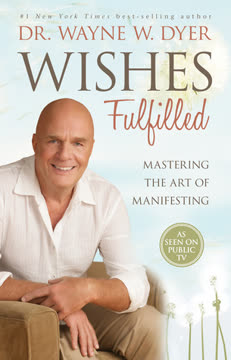
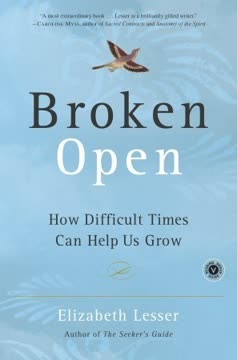


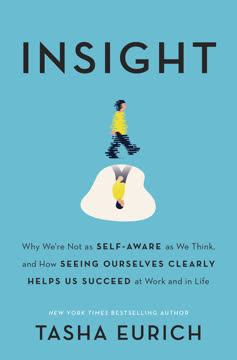
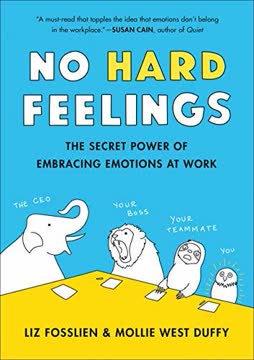
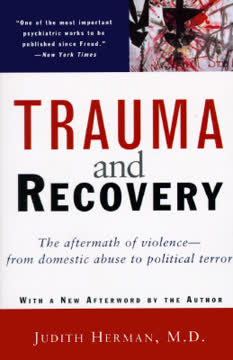
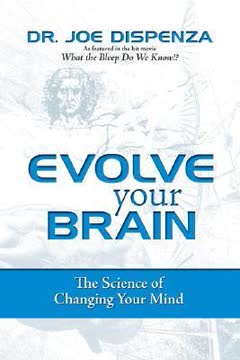
Download PDF
Download EPUB
.epub digital book format is ideal for reading ebooks on phones, tablets, and e-readers.
